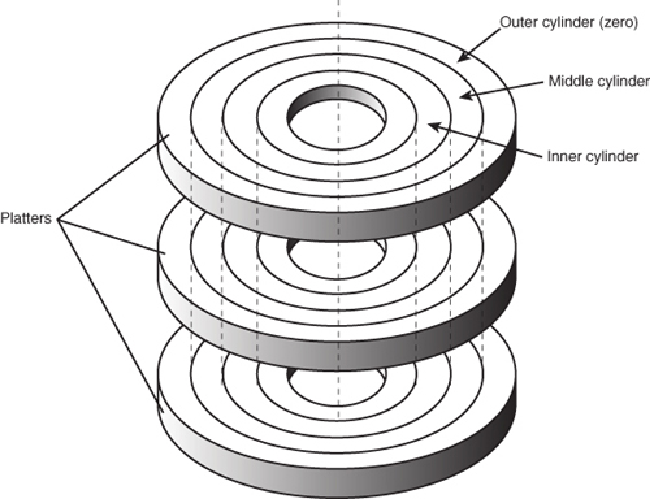Hardware Reference
In-Depth Information
Originally, most hard disks spun at 3,600 rpm—approximately 10 times faster than a
floppy disk drive. For many years, 3,600 rpm was pretty much a constant among hard
drives. Now, however, most drives spin much faster. Although speeds can vary, modern
drives typically spin the platters at either 4,200 rpm, 5,400 rpm, 7,200 rpm, 10,000 rpm,
or 15,000 rpm. Most standard-issue drives found in PCs today spin at 7,200 rpm, with
high-performance models spinning at 10,000 rpm, although many less-expensive drives
still spin at 5,400 rpm. Some of the small 2 1/2-inch notebook drives run at only 4,200
rpmtoconservepower,and15,000rpmdrivesareusuallyfoundonlyinhigh-performance
workstations or servers, where their higher prices, heat generation, and noise can be more
easily dealt with. High rotational speeds combined with a fast head-positioning mechan-
ism and more sectors per track are what make one hard disk faster overall than another.
The heads in most HDDs do not (and should not!) touch the platters during normal opera-
tion. However, on most drives, the heads do rest on the platters when the drive is powered
off. In most drives, when the drive is powered off, the heads move to the innermost cylin-
der, where they land on the platter surface. This is referred to as
contact start stop
(CSS)
design. When the drive is powered on, the heads slide on the platter surface as they spin
up, until a thin cushion of air builds up between the heads and platter surface, causing the
heads to lift off and remain suspended a short distance above or below the platter. If the

